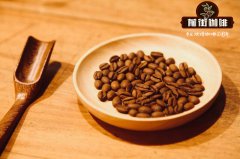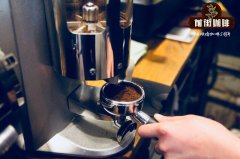Appreciate the variety and taste of individual coffee from all over the world.

Professional coffee knowledge exchange more coffee bean information please follow the coffee workshop (Wechat official account cafe_style)
Yunnan coffee bean varieties Typica and Bourbon
Coffee tree is a genus of Rubiaceae in botany. Coffee trees are native to subtropical Africa and some islands in southern Asia. In the 16th and 17th centuries, coffee was introduced into Europe through the merchants of Venice and the Dutch hegemony of the sea, and exported to countries around the world from Africa. At present, those coffee trees are planted in more than 70 countries, mainly in the equatorial regions such as the Americas, Southeast Asia and India.
The classification of coffee trees is very complex, there are many species, diversity and varieties. Different varieties of coffee beans have different tastes, but even the same varieties of coffee trees have their own unique flavor due to the influence of different soils and different climates. Most vulnerable to frost, after hundreds of years of agricultural deduction, the main coffee growing areas, with the equator as the center, between the Tropic of Cancer, abundant rainfall, the temperature between 15 degrees Celsius, 25 degrees Celsius, this area is the so-called coffee belt (Coffee Belt or Coffee Zone).
Generally speaking, coffee is generally divided into two types according to its particle size: one is Arabica, which is highly regarded as a small fruit (grain) with obvious delicious acid. The other is Robusta, which has larger particles, lower acidity, more bitterness and higher caffeine.
Haodou Coffee integrates coffee cup testers, bean bakers and baristas to set up a professional tasting team, which is divided into three major producing areas according to the world coffee belt: Latin America, Asia-Pacific and Africa, carefully selecting the best bean sources in each region to optimize roasting, and completely draw out the aroma and characteristics of the beans themselves, so that the coffee not only has a top taste, but also presents a variety of coffee fragrance and flavor.
When tasting coffee beans, you will also be surprised that coffee can bring such a variety of charming customs.
Types of coffee beans
Important Notice :
前街咖啡 FrontStreet Coffee has moved to new addredd:
FrontStreet Coffee Address: 315,Donghua East Road,GuangZhou
Tel:020 38364473
- Prev

An article to understand the common boutique bean flavor Daquan coffee beans and a complete record of the origin
Professional coffee knowledge exchange more coffee bean information please follow the coffee workshop (Wechat official account cafe_style) Yunnan coffee bean varieties Typica and Bourbon if you have not yet formed a systematic understanding of coffee, coupled with selection difficulties, it is better to start with the following questions, understand your needs, drink black coffee, it is more suitable to filter and siphon with your hands
- Next

If espresso changes the ratio of powder to water, does the extraction time also change? Espresso extraction ratio
Professional coffee knowledge exchange more coffee bean information Please follow the coffee workshop (Wechat official account cafe_style) Coffee powder water is more practical than the experiment, do you want to ask about the powder / water ratio? Suppose you usually use 20 grams of powder to extract 60 grams of powder and take 30 seconds to make a powder-to-water ratio of 1:3, if I want to make a powder-to-water ratio of 1:2, it also uses 20.
Related
- Beginners will see the "Coffee pull flower" guide!
- What is the difference between ice blog purified milk and ordinary milk coffee?
- Why is the Philippines the largest producer of crops in Liberia?
- For coffee extraction, should the fine powder be retained?
- How does extracted espresso fill pressed powder? How much strength does it take to press the powder?
- How to make jasmine cold extract coffee? Is the jasmine + latte good?
- Will this little toy really make the coffee taste better? How does Lily Drip affect coffee extraction?
- Will the action of slapping the filter cup also affect coffee extraction?
- What's the difference between powder-to-water ratio and powder-to-liquid ratio?
- What is the Ethiopian local species? What does it have to do with Heirloom native species?

